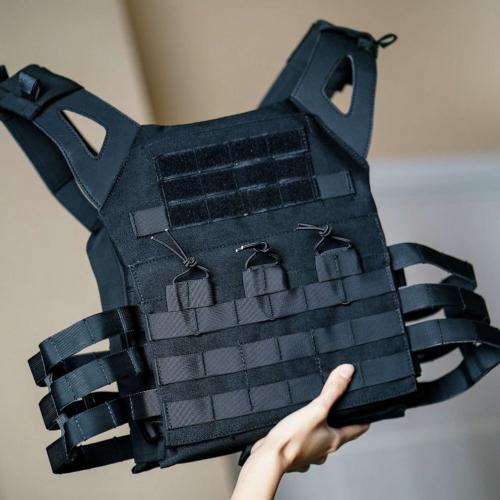Understanding Ballistic Protection: How Body Armor Works

Body armor, also known as
ballistic protection, is a critical component of modern protective gear used by
military personnel, law enforcement officers, and civilians in high-risk environments.
Its primary purpose is to safeguard against ballistic threats, such as bullets
and projectiles, that pose serious risks to personal safety. Understanding how body armor works is essential to appreciate its importance
and make informed decisions when selecting the right level of protection. In
this article, we will delve into the mechanics of ballistic protection, the
different types of body armor, and how it offers defense against ballistic
threats.
The Mechanics of Ballistic Protection:
The concept of ballistic
protection revolves around the principles of energy absorption and dissipation.
When a bullet or projectile impacts body armor, it possesses kinetic energy
from its motion. The body armor's materials, such as Kevlar, Dyneema, or
ceramics, are designed to absorb and distribute this energy over a larger area,
reducing the force transmitted to the wearer.
Types of Body Armor:
- Soft Body Armor: Soft body armor is
typically made from high-strength synthetic fibers, such as Kevlar or
Dyneema. It is flexible and lightweight, providing enhanced mobility for
wearers. Soft body armor is effective against lower-velocity projectiles,
such as handguns and shotgun pellets. However, it may not offer sufficient
protection against high-velocity rifle rounds.
- Hard Body Armor: Hard body armor consists
of rigid plates made from materials like ceramics or steel. It provides
excellent protection against high-velocity rifle rounds and other
armor-piercing threats. Hard armor is usually worn in conjunction with
soft body armor for comprehensive protection.
Level of Protection:
Body armor is classified into
different levels based on its ability to withstand ballistic threats. The National
Institute of Justice (NIJ) and other standards organizations establish these
levels to ensure uniformity in testing and certification. The most common NIJ
levels include Level IIA, Level II, Level IIIA, Level III, and Level IV, with
each level offering varying degrees of protection against different types of
ammunition.
- Level IIA: Offers protection against
low-velocity 9mm and .40 S&W ammunition.
- Level II: Provides protection against
higher-velocity 9mm and .357 Magnum ammunition.
- Level IIIA: Protects against various
handgun rounds, including .44 Magnum and .357 SIG.
- Level III: Designed to stop rifle rounds
such as 7.62x51mm NATO and 5.56x45mm NATO.
- Level IV: Offers protection against
armor-piercing rifle rounds, including 7.62x63mm (.30-06) M2AP.
Layers and Materials:
Soft body armor consists of
multiple layers of high-strength fibers woven together to form a flexible
fabric. These layers work together to trap and disperse the energy of incoming
projectiles. Kevlar and Dyneema are two of the most widely used materials for
soft body armor due to their exceptional strength and light weight.
Hard body armor, on the other
hand, relies on rigid plates made from materials like ceramics or steel. These
plates are capable of breaking up and deforming the projectile upon impact,
dissipating its energy and preventing penetration.
Ballistic Panels and Trauma Pads:
Many modern body armor designs
include ballistic panels, which are removable inserts that can be placed in the
front and back pockets of plate carriers or vests. Ballistic panels provide
additional protection to vital organs and areas not covered by hard plates.
Trauma pads are also commonly used to further reduce the impact force on the
wearer's body by absorbing and distributing the remaining energy after the
projectile has been stopped.
Proper Fit and Maintenance:
To ensure the effectiveness of
body armor, it is crucial to wear it properly and maintain it regularly. Proper
fit is essential to ensure that the armor covers vital areas, especially the
chest, heart, and lungs. It should be snug but not overly tight, allowing for
comfortable movement.
Regular maintenance, including
inspection for damage, cleaning, and storage in a cool, dry place, is necessary
to prolong the life and performance of the body armor.
In Conclusion:
Body armor is a crucial tool for
protecting individuals in high-risk environments against ballistic threats. By
absorbing and distributing the energy of incoming projectiles, body armor
significantly reduces the risk of injury and saves lives. Understanding how
body armor works and its different levels of protection empowers users to make
informed choices when selecting the appropriate gear for their specific needs.
Whether it is soft or hard body armor, its effectiveness lies in the proper
fit, quality materials, and regular maintenance. In a world where ballistic
threats are a reality, body armor plays a vital role in enhancing personal
safety and ensuring the well-being of those who wear it.
Post Your Ad Here
Comments